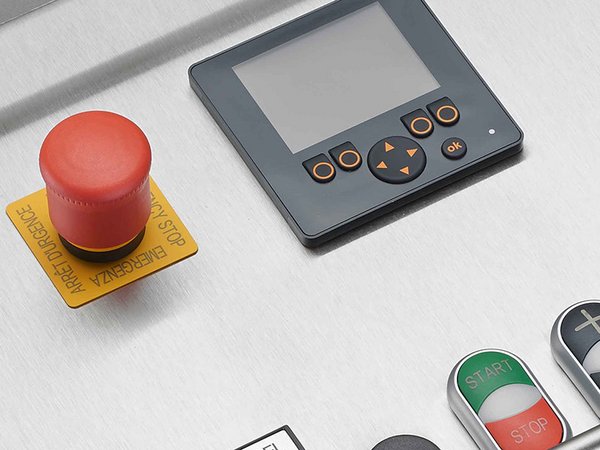Pumping systems for cryogenic gases
Cryogenic gases are used in various fields, e.g. as technical gas in a wide range of industrial sectors or as medical gas. Special transport vehicles with suitable, vacuum-insulated containers are used to transport the cryogenic gas from the gas manufacturer to the customer.
Request pumping system directly
Reasons for safe pumping systems from WEHN
So that the cryogenic gas can be transferred from the transport container to the customer's container (e. g. stationary tank at an industrial company), pumping systems designed specifically for this purpose are used. A cryogenic pump designed for the particular application in combination with a control system pumps the cryogenic gas from the transport container into the customer's container.
- Extensive safety features ensure that the transfer process can be carried out safely by the operator .
- We are specialized in the design, development and production of pumping systems for cryogenic gases and the necessary drive technology since 1991.
- In addition to our standard systems, systems are designed, developed and produced according to individual customer requirements.
- We offer electrically and hydraulically driven pump systems with the matching drive technology.
Frequently asked questions about cryogenic pumping systems
What are cryogenic gases?
Fluids with a specific boiling point below room temperature are referred to as cryogenic substances. Most standard gases are cooled down below their boiling points for transportation, thus converting them into a liquid state. Argon, nitrogen, oxygen, and helium are among the most common gases that are liquefied, stored, and transported at extremely cold temperatures. The boiling point of liquid nitrogen (LIN – liquid Nitrogen) is -196 °C. Approximately 700 liters of gas can be obtained from one liter of LIN.
We are pleased to introduce our pumping systems for cryogenic gases.
How does an electric pumping system work?
Electric pump systems utilize an electric motor as the driving force. Advantages include low noise production and flexibility in terms of various power supply systems. The power can be sourced through a generator system within the towing vehicle or through a robust grid connection. Presently, specialized high-speed motors are employed, which interact directly with the pump impeller without the need for an intermediary gearbox.
How does a hydraulic pumping system work?
In hydraulic pump systems, the centrifugal pump is driven by a hydraulic motor. Often, in high-performance systems, an intermediary gearbox is required. Hydraulically driven pump systems can achieve very high pumping capacities and are especially well-controllable. They excel in situations involving high flow rates and simultaneously high pressures.
When to use an electric pumping system, when to use a hydraulic pumping system?
Electrically driven pumping systems are used in noise-sensitive environments or in applications where very high pressures and high flow rates are not the primary requirements. Smaller distribution vehicles are also frequently equipped with electric systems. The flexible supply via mains connection or generator system is a further application and cost advantage.
Hydraulically driven pump systems show their advantages where high delivery rates and simultaneously high pressures are required - even over a long period of time. Hydraulic systems are also used with flammable gases, as it is easier to implement the requirements of explosion protection here.
Which gases (media) can be transferred with the systems?
Both systems can be used for the standard gases nitrogen, oxygen and argon. Mixed gases can also be transferred with them, as can carbon dioxide. For flammable gases (e.g. ethylene), hydraulic systems are mainly used.
Is a media change possible?
In our systems, the customer can perform this himself. In doing so, the setup of the system is simply changed to the gas that is to be transferred. Due to the different densities of the various gases, other settings are then used in the background for the pump control. A prerequisite for this is, of course, a basic suitability of the other components such as the container, pump, etc.. However, this is usually the case in order to ensure the greatest possible flexibility.

![[Translate to Englisch:] Kryogenes Pumpsystem](/fileadmin/_processed_/c/0/csm_Wehn_kryogene__pumpsysteme_003_6fbe8a11c7.jpg)

